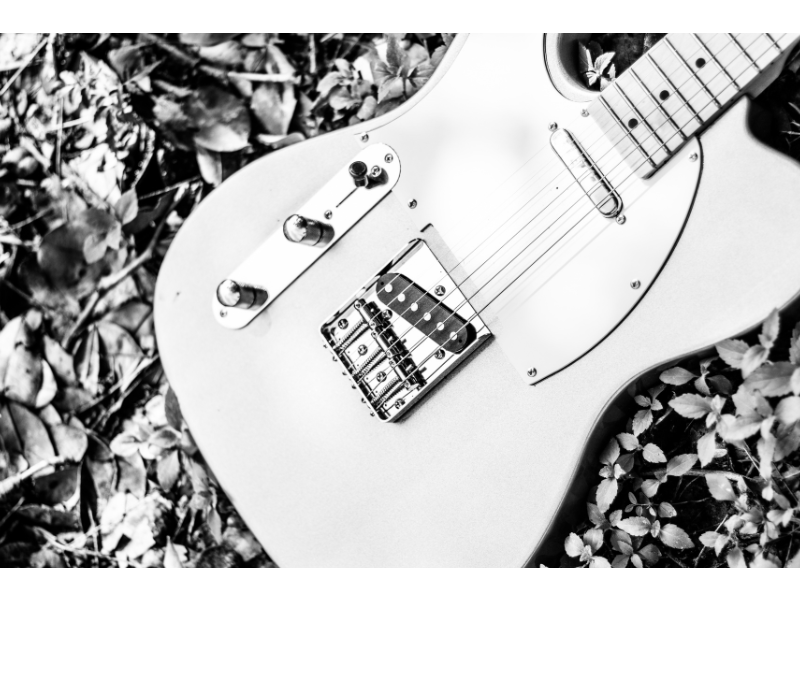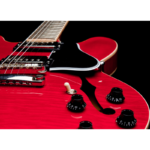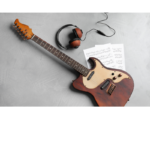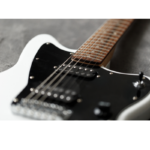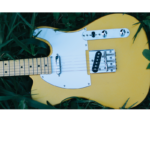Introduction
Guitar chords bar chords are a monumental step in their musical journey. Often viewed with a mixture of dread and excitement, barre chords open up the fretboard, allowing you to play a myriad of chords across different keys with ease. This guide delves into the world of guitar chords bar chords, focusing on moveable shapes, and how to play major, minor, and dominant chords. By the end, you’ll not only understand these concepts but also how to apply them practically in your playing.
What Are Guitar Chords Bar Chords?
Guitar chords bar chords, also known as bar chords, involve using one finger (typically the index) to press down multiple strings across a single fret. This “bar” acts as a movable nut, allowing the guitarist to shift chord shapes up and down the neck, effectively transposing them to different keys. The primary benefit of barre chords is their versatility: once you learn a shape, you can play it in any key by moving it to different positions on the fretboard. Download our free chord resources to help you learn chords.
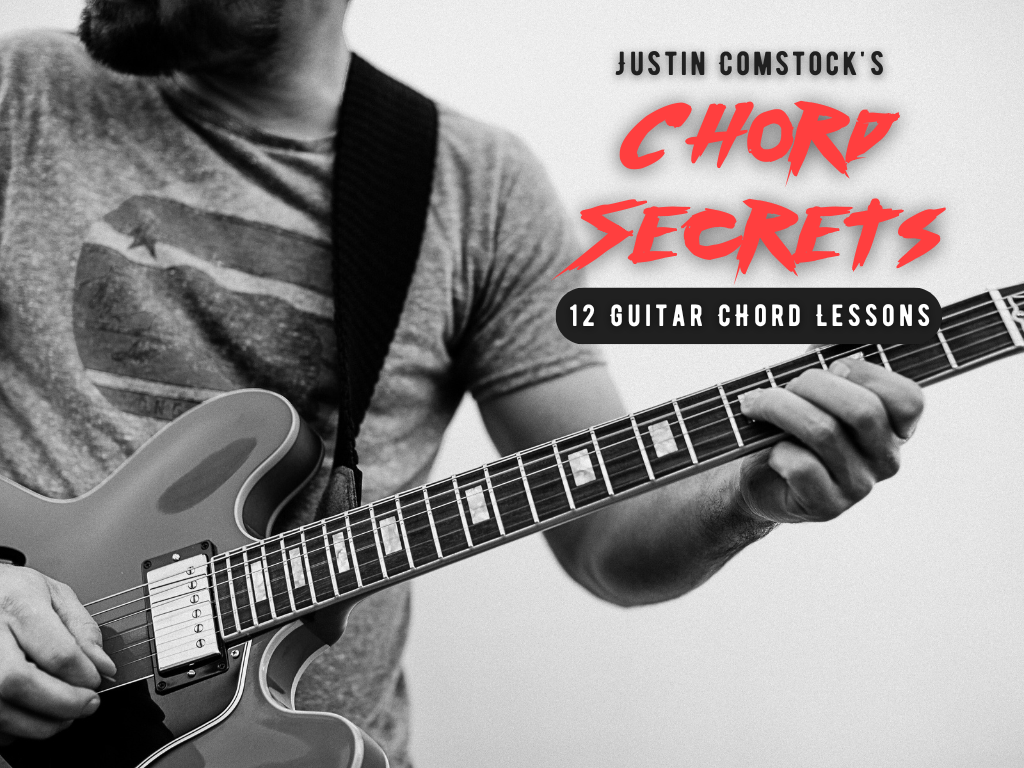
Download The FretDeck & Chord Secrets Course!
Download Course
The Basics: Moveable Guitar Chords Bar Chords
The concept of moveable barre chords relies on a few foundational shapes. These shapes are based on open chord forms (E, A, and minor variations) and can be shifted up and down the neck. The most common moveable shapes are derived from the E and A open chords.
E Shape Major Guitar Chords Bar Chords
The E shape major barre chord is based on the open E major chord. Here’s how it’s played:
e|---1---
B|---1---
G|---2---
D|---3---
A|---3---
E|---1---
In this shape, your index finger bars across all the strings at the first fret, effectively shifting the open E major shape up one fret. Move this shape up the neck, and you get different major chords. For example, at the 3rd fret, this shape gives you a G major chord:
e|---3---
B|---3---
G|---4---
D|---5---
A|---5---
E|---3---
A Shape Major Barre Chord
The A shape major barre chord is based on the open A major chord. Here’s how it’s played:
e|---5---
B|---5---
G|---6---
D|---7---
A|---7---
E|---5---
In this shape, your index finger bars across all the strings at the 5th fret, with the rest of your fingers forming an A major shape. Move this shape up and down the neck for different major chords. For example, at the 7th fret, this shape gives you a D major chord:
e|---10---
B|---10---
G|---11---
D|---12---
A|---12---
E|---10---
Playing Minor Barre Chords
Minor guitar chords bar chords follow a similar concept but use the minor versions of the E and A shapes.
E Shape Minor Barre Chord
The E shape minor barre chord is based on the open E minor chord. Here’s how it’s played:
e|---1---
B|---1---
G|---1---
D|---3---
A|---3---
E|---1---
Again, your index finger bars across all the strings at the first fret, while the rest of your fingers form the E minor shape. Move this shape up the neck for different minor chords. For example, at the 5th fret, this shape gives you an A minor chord:
e|---5---
B|---5---
G|---5---
D|---7---
A|---7---
E|---5---
A Shape Minor Barre Chord
The A shape minor barre chord is based on the open A minor chord. Here’s how it’s played:
e|---5---
B|---5---
G|---5---
D|---7---
A|---7---
E|---5---
Your index finger bars across all the strings at the 5th fret, and the rest of your fingers form the A minor shape. Move this shape up the neck for different minor chords. For example, at the 7th fret, this shape gives you a D minor chord:
e|---10---
B|---10---
G|---10---
D|---12---
A|---12---
E|---10---
Dominant 7th Guitar Chords Bar Chords
Dominant 7th chords add a jazzy, bluesy flavor to your playing. These chords use a combination of major and minor intervals.
E Shape Dominant 7th Barre Chord
The E shape dominant 7th barre chord is based on the open E7 chord. Here’s how it’s played:
e|---1---
B|---1---
G|---2---
D|---1---
A|---3---
E|---1---
Your index finger bars across all the strings at the first fret, and the rest of your fingers form the E7 shape. Move this shape up the neck for different dominant 7th chords. For example, at the 3rd fret, this shape gives you a G7 chord:
e|---3---
B|---3---
G|---4---
D|---3---
A|---5---
E|---3---
A Shape Dominant 7th Guitar Chords Bar Chord
The A shape dominant 7th barre chord is based on the open A7 chord. Here’s how it’s played:
e|---5---
B|---5---
G|---6---
D|---5---
A|---7---
E|---5---
Your index finger bars across all the strings at the 5th fret, and the rest of your fingers form the A7 shape. Move this shape up the neck for different dominant 7th chords. For example, at the 7th fret, this shape gives you a D7 chord:
e|---10---
B|---10---
G|---11---
D|---10---
A|---12---
E|---10---
Tips for Mastering Guitar Chords Bar Chords
- Proper Thumb Placement: Keep your thumb behind the neck, roughly in the middle, to provide counter-pressure and support for your fingers.
- Finger Strength: Building finger strength and endurance is crucial. Practice regularly to develop the necessary muscle memory and stamina.
- Hand Position: Ensure your wrist is slightly bent and relaxed. This helps in applying even pressure across all the strings.
- Gradual Practice: Start slowly. Begin with the E shape major barre chord and practice moving it up and down the neck. Once comfortable, move on to minor and dominant shapes.
- Chord Transitions: Practice transitioning between open chords and barre chords, as well as between different barre chord shapes, to improve fluidity in your playing.
- Partial Barres: If full barre chords are initially too challenging, try partial barres, where you bar only a few strings. This can help build confidence and strength.
Conclusion: guitar chords bar chords
Mastering guitar barre chords is a gateway to unlocking the full potential of your instrument. With these moveable shapes, you can play virtually any chord in any key, making you a more versatile and capable guitarist. Remember, the journey to mastering barre chords requires patience, practice, and persistence. Start with the basics, gradually incorporate more complex shapes, and before you know it, you’ll be navigating the fretboard with ease.
By integrating these concepts into your practice routine, you’ll soon find that the fretboard becomes less intimidating and more of a playground for your musical creativity. Happy playing!
Feel free to leave any comments or questions below. What challenges are you facing with barre chords? How has learning barre chords transformed your playing? Share your experiences and tips with fellow guitarists!

Download The FretDeck & Chord Secrets Course!
Download Course

